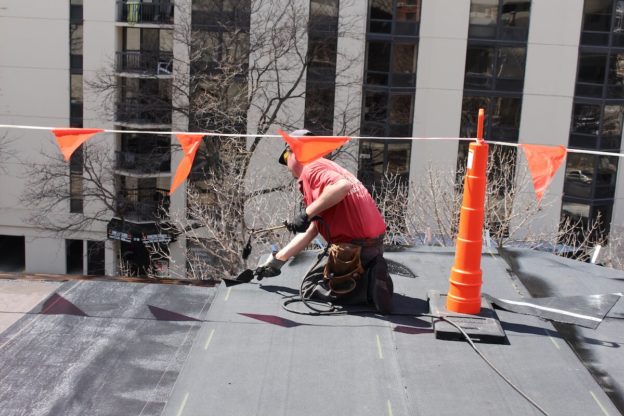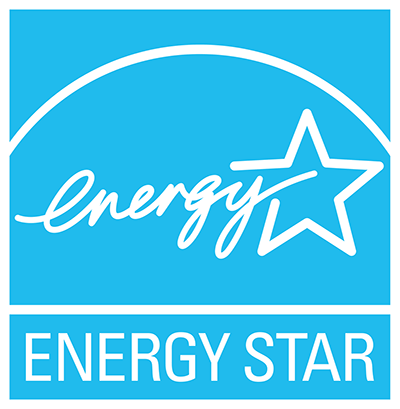Today we are going to write about what is the best material or a flat roof. This is a common question we see many people ask online and we wanted to provide you with a professional guide so you can learn about flat roof materials and a lot more info on the subject. Let’s get started.
Despite having a reputation for repairs and leaks, flat roofs are the first choice of many people because of the flexibility they offer. Of course, the word flat does not mean that they are flat. The roofs are called flat because of their slight pitch of ½ or ¼ per foot. Although the pitch creates enough slope for water drainage, it often becomes a problem if its material is poor or has structural flaws.
That means choosing the right material for your flat roofs is vital for its longevity and lifespan. The good news is that there are plenty of options when it comes to selecting material for the flat roof. There is no need to choose the same conventional hot-mopped built-up roofs that rarely provides the long-term reliability as well as safety you want in the flat roofs.
So What Is the Best Material for a Flat Roof?
Here we have rounded up some of the most common types of flat roof materials to help you make an informed decision.
Best Materials for Flat Roofs
Single Layer Membrane Roof
The roof membrane is one of the most advanced roofing technologies. That makes it a top choice in the commercial roofing construction industry. They are popular with the name of plastomeric or elastomeric roofing membrane in the market. This single-ply roof comes in a variety of categories that includes;
- Polymer-modified bitumens
- Neoprene (polychloroprene)
- Polyvinyl Chloride (PVC)
- Ethylene Propylene Diene Monomer (EPDM)
- Chlorosulfonated Polyethylene Sheet and Chlorinated polyethylene
The common and most sought-after single-ply membrane material is EPDM, which is also called rubber roof. This material makes the first choice for commercial and residential use for roof construction.

One of the key advantages of this single-membrane rubber roof is that it is affordable as compared to other roof membranes. If you choose darker shade of EPDM membrane, it has great quality to absorb heat. The feature drives up energy bills for you.
The roof experts install a thin sheet material (0.03 inches) and apply it to the roof as single layer. Because this flat roof material uses polymer and synthetic rubber, it gives wonderful elasticity and flexibility of the roof. Moreover, this feature gives EPDM an excellent ability to handle weather and temperature changes and other impacts as compared to traditional built-up roofs.
You can attach these roof membranes in the number of ways. For example, your roofing expert can lay the material partially or hold it down using rock ballast (a structure requires to support roof weight). You can also get your roof fully adhered to its deck. Use of adhesive is common to fasten the roof seams of Neoprene and EPDM. PVC roof seams, however, are heat welded.
Built-Up Roofing
It is one of the traditional roofing material options and still makes a popular choice for solving the low-pitch roofing problems. The roofing material is at least a century old and can handle the roof challenges better than asphalt shingles.
The installation process of Build-up roofs includes layering of roofing felt – a special type of roofing layer. This roofing felt impregnates and embed asphalt in bitumen.
Roofing experts apply this roofing felt with a hot mop. The coal-tar pitch and hot-applied asphalt blend deeply with bitumen roof felt. The fine mixture creates a strong monolithic and shiny roof membrane. The roofing professional repeats the tar layering process by overlapping roof felt until all materials make two to five piles of thickness.
To protect this build-up of assembly, roofing professionals applies a surface of compressed stone granules to the top. This layer serves as a protective shield against the harsh weather and UV lights.
Modified Bitumen Roof Material
Like build-up roofing, modified bitumen cap roofing sheet dates back to 19 century. Developed in 1960s, it is a replacement technology for build-up roofing. The roofing material typically uses BUR technology and adds multiple roof wear layers and cap sheets. These cap sheets include polymer to increase the life span and strength of the material.
There are plenty of techniques you can choose to install these roofs. It is always better to determine the best installation technique by considering specific requirements of your property. Some of the common installation methods include;
- Hot applied
- Torch applied
- Cold applied
- Self-adhered
The polymer in these roof sheets provides an excellent flexibility and elasticity; particularly in the low temperature or winters. Styrene butadiene styrene and Atactic polypropylene (APP) are the common polymers used in these roof sheets. Both are great to add a rubber-like characteristic to the material.
Generally, roof professionals use hot asphalt or cold adhesives to install bitumen cap. However, Thermoplastic APP roof sheets, uses the torch method for the proper and long-lasting application.
Material Life Span
Flat roof’s lifespan generally depends on a wide variety of the factors in which proper installation is the most important one. If you live in the area that experiences volatile climate, the material you put in will undergo more stress and that may reduce its longevity and lifespan. Plus, if your roof has a heavy traffic, the material will wear down fast.
Here is a quick overview of material life span one can expect from roof materials;
- PVC – 10 to 30 years.
- TPO – 8 to 15 years.
- EPDM – 15 to 20 years.
- Bitumen – 15 to 25 years.
- Built Up Roof – 20 to 25 years.
- Spray-On – 30 years.
Bottom Line
In a nutshell, finding the perfect flat roof material requires you to consider some common problems your roof might face (volatile climate, and traffic) in the future.
Not only this, you also need to consider your property structure and budget. Many roof experts recommend hiring the services of professional roofing contractors to assess or examine the specific surface coating your roof needs.
Thus, the article includes useful information regarding the best roof material for a flat roof to help you choose the most suitable one.












